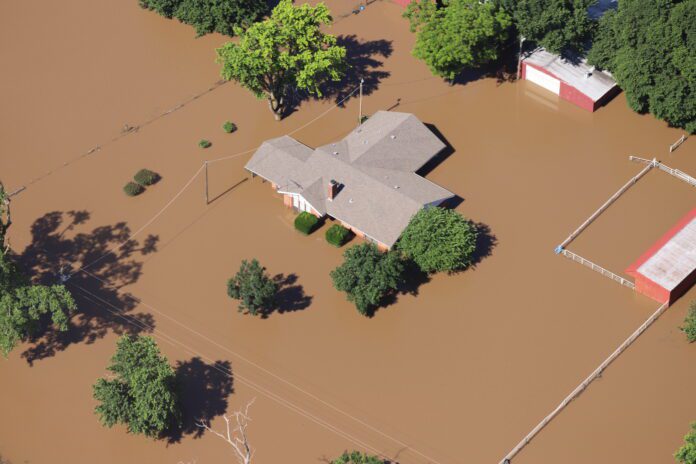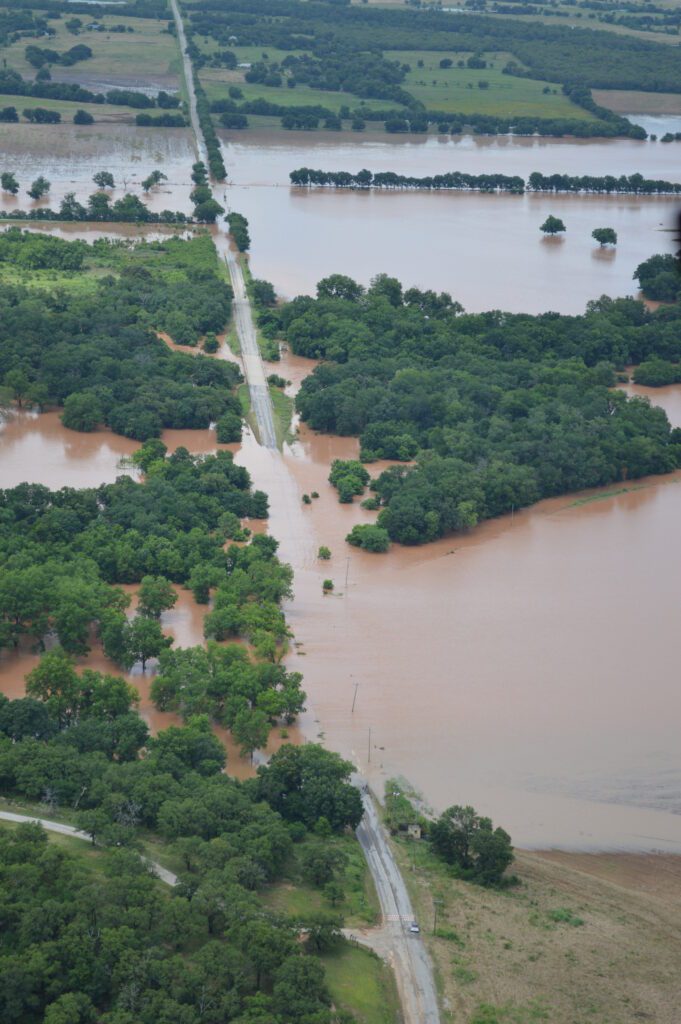
‘Tis the season for flooding … and according to the Oklahoma Insurance Department, the average claim for flooding in 2021 was $44,050. And remember – even an inch of water in a home can leave its owner saddled with upwards of $25,000 in damages.
“Although it’s common for our state to experience widespread flooding, flood fatigue can be deadly,” says Kelsey Patterson, the public information officer for the Oklahoma Department of Emergency Management. “No matter how certain you are that you can make it through a flooded walkway or road – think again. Many underestimate the power of water and drown.”
Patterson mentions that just six inches of fast-moving flood water can whisk an adult off their feet, and two feet can carry most vehicles.
“Plus, you never know what condition the road is in under flood waters,” she says. “It could be severely damaged or completely washed away. It is always better to be safe than sorry.”
Patterson suggests residents tune in to a local news station to stay informed during a flooding event, as waters can rise quickly.

“If advised to evacuate, do so immediately,” says Patterson. “You should have a go-kit stocked with emergency essentials just in case, including a map. Your normal routes may be flooded, so you’ll need to be aware of your local geography to find a different way out to higher ground.”
It may be tempting to plow through a flooded street, but this saying should always be at the forefront: Turn around – don’t drown!
“If you’re unable to leave your home as the floodwaters rise, go to the highest level you can and call 911 or signal for help,” suggests Patterson. “If you have time, turn off your utilities, disconnect appliances and move some of your valuables to a higher floor. Do not go into any space where water covers electrical outlets or cords due to the risk of electric shock.”
Luckily, it’s easy to prepare for flooding before you face disaster. Sign up for alerts and warnings in your area, establish an emergency and family communication plan and gather supplies.
“There are a few actions you can take more specific to flooding,” says Patterson. “For starters, know that most basic home insurance policies do not include coverage for flood damage. Know your policy and add coverage if you need to, especially if you live in a flood zone. The Oklahoma Insurance Department can help you understand the coverage you need, and the Oklahoma Water Resources Board’s new Flood Plan Dashboard can show you your flood risk.”
Other steps to take include taking a household inventory, securing your important documents, elevating and anchoring utilities, and installing a sump pump with battery backup if your home has a basement. Keep an ax in the attic to break through to the roof in the event of extreme flooding.
“Even a task as routine as clearing debris from your gutters and downspouts can help you avoid an unwanted accumulation of water,” says Patterson.
Always include pets and large animals in your emergency plan, which should be formulated before a disaster strikes.
Make a plan, stay aware and stay safe!






















